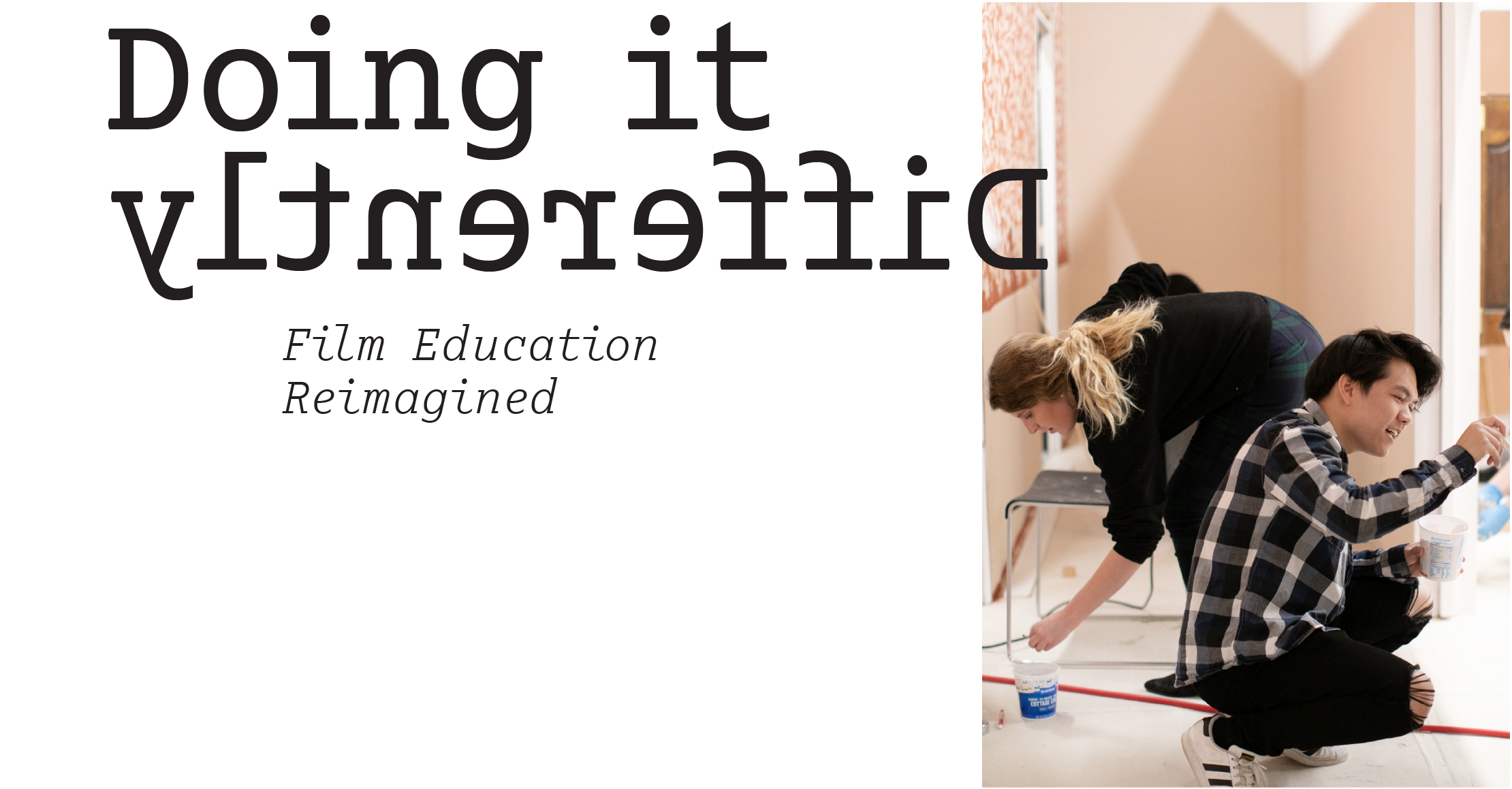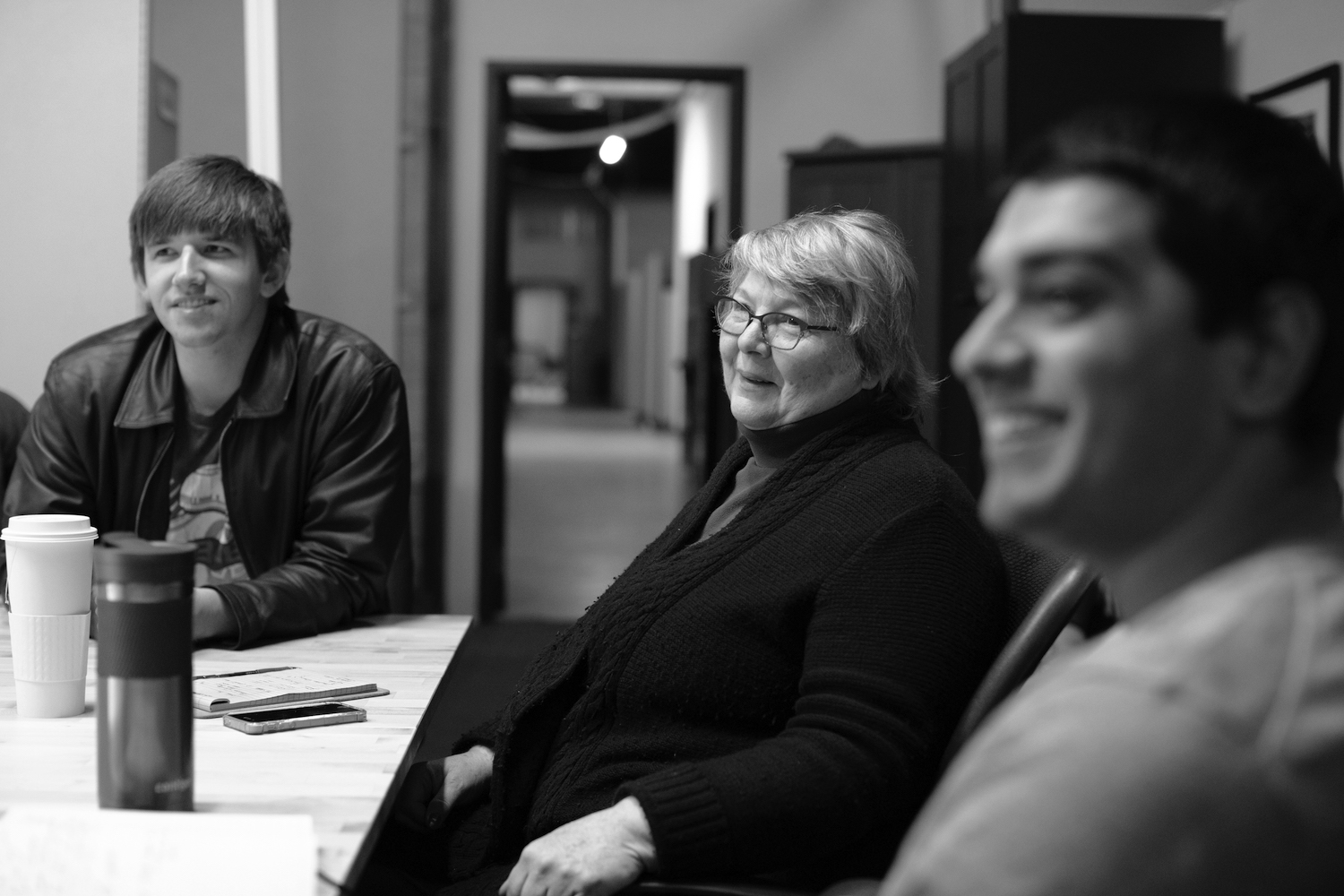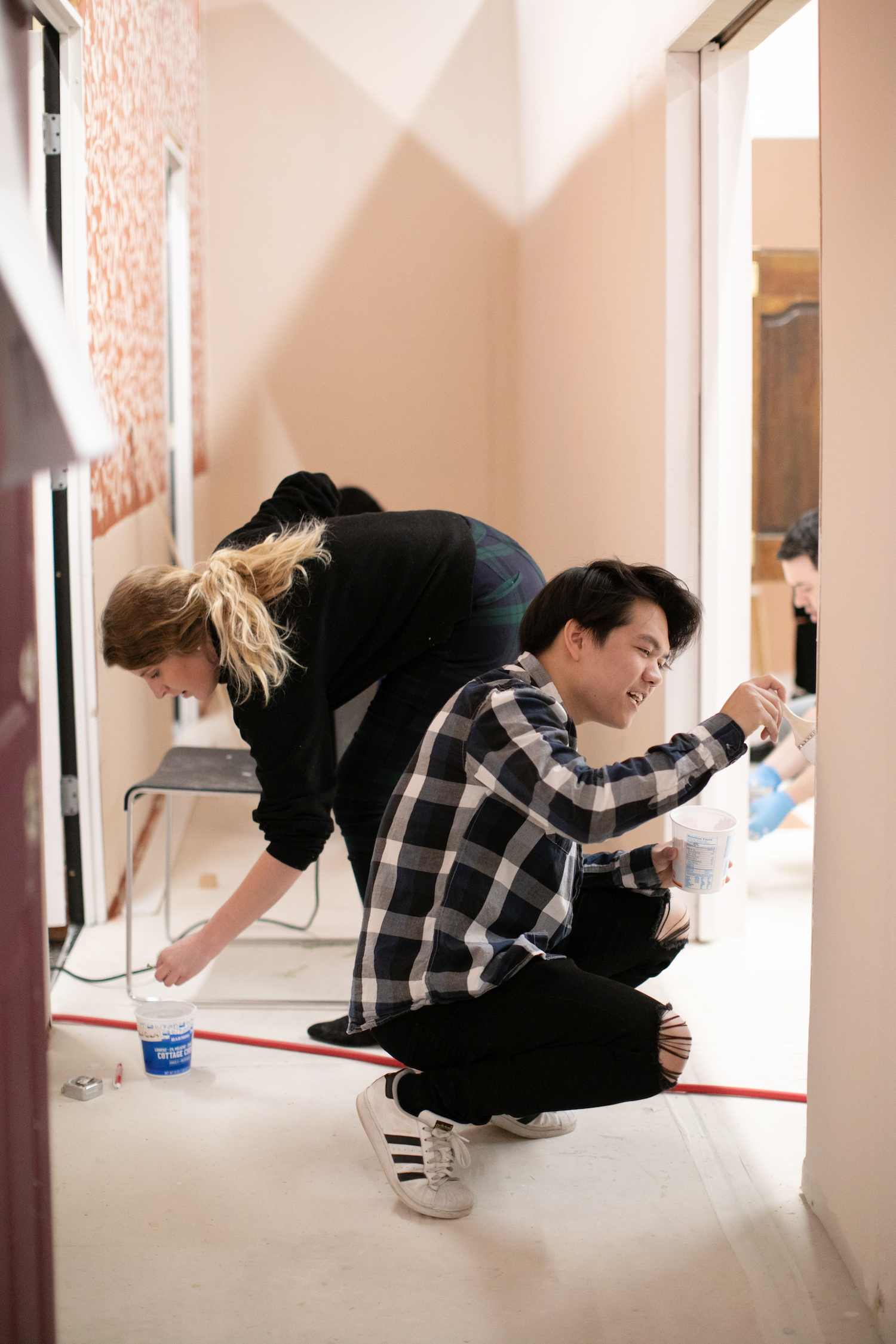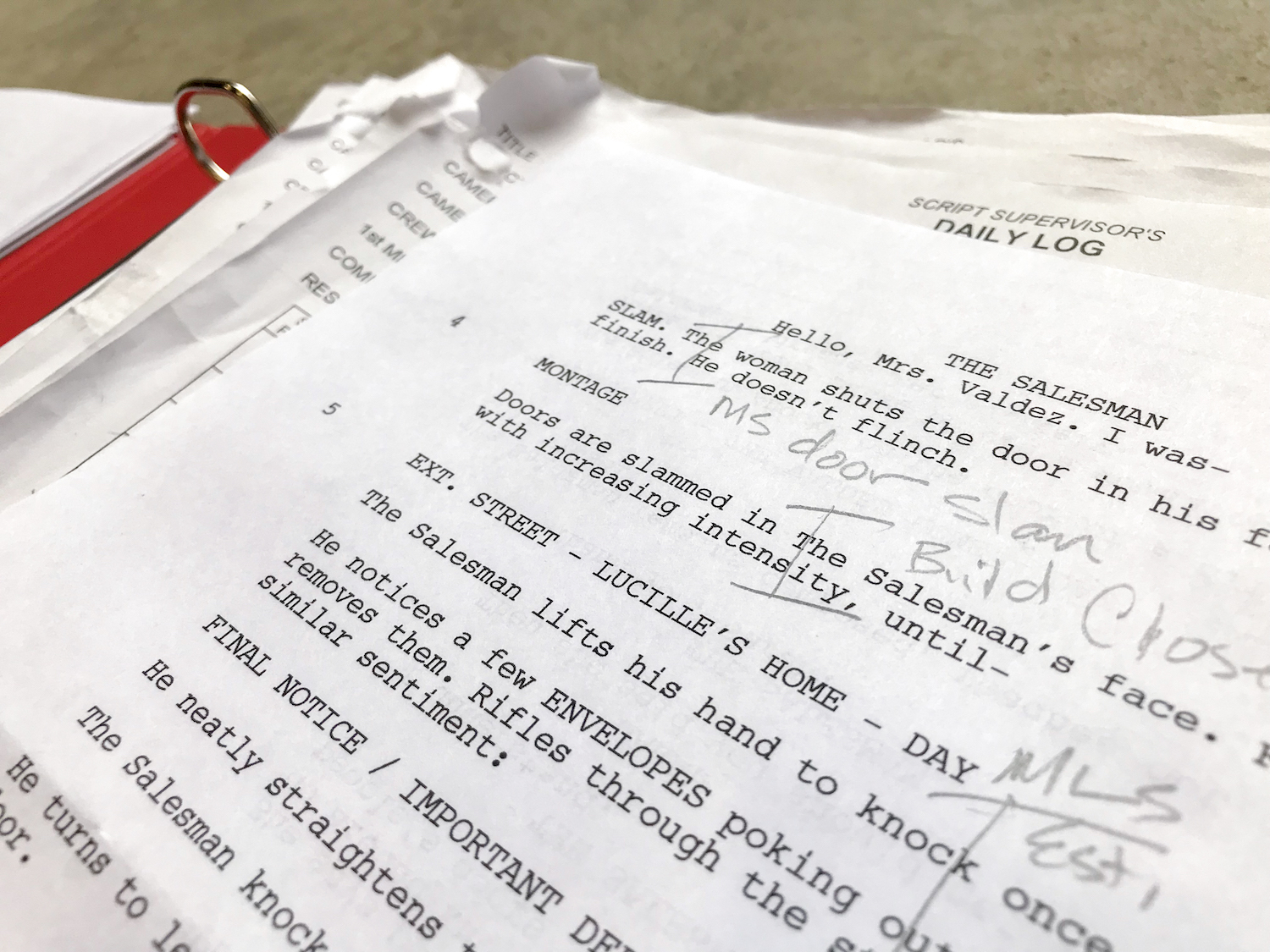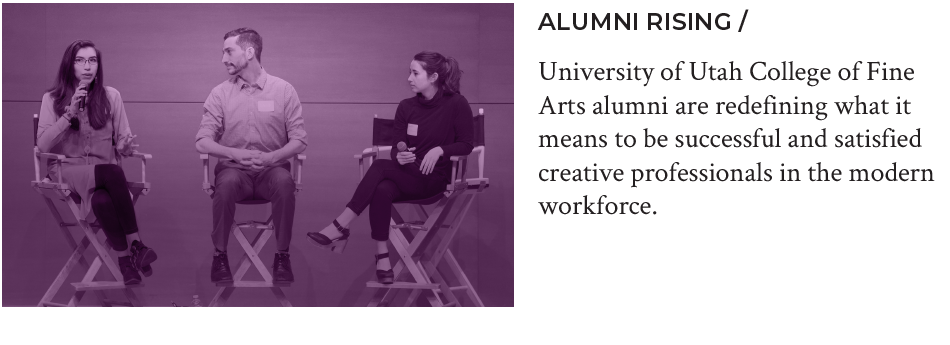WRITTEN BY DEBBIE HUMMEL
PHOTO SARAH KNIGHT PHOTOGRAPHY
In the Film and Media Arts Building, in a space which was the University of Utah’s Museum of Fine Arts, art of a different kind is taking shape in an innovative year-long filmmaking course.
In Associate Professor Connie Wilkerson’s classes, Filmmaking 4545 and 4555, students create a short film from set to costumes, auditions to editing, cinematography to marketing.
“There are typically two kinds of film schools. One is project based, where students make individual pieces of work. The other is the industry model, where students get canonized as the writer or the director,” said Kevin Hanson, Chair of the Film and Media Arts Department. “What Connie is doing with this class is different than both of those.”
Starting in the fall, the students take a look at finalists from a university-wide student screenwriting competition, select a script, interview for spots on the film crew and then spend both fall and spring semesters making a short film.
Being offered for the second year in row, Hanson says the class is not only unique among film programs, but is successful largely due to Wilkerson’s background and the students’ enthusiasm for collaboration.
Wilkerson has a background in theater and has a fair amount of experience in set design, Hanson said. The film has both on location shooting and shooting on set.
“She has such a huge commitment to her students and is determined to make it work as a great experience for them,” he said. “Also, this particular generation of college students want to work as a team. It is hard not to admire those desires.”
Jordan Boge is the producer for the 2018-19 film titled, “The Salesman,” and the only graduate student in the class. He has produced television news and worked on documentaries but, although this is his first foray in narrative fiction, still he feels confident in his role. Seeing that happen for others in the class is what he’s finding really appealing about the course.
“Our editor is going to know how to edit a short film when this is done,” said Boge.
“Usually you are going to make three or four (film) projects a semester. We’re going to take a whole year.

A page of the script for the class production of “The Salesman.”
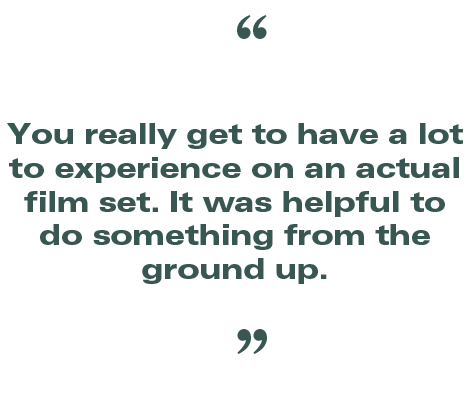
-Emiliano Mora
On a gray mid-January day, FMAB 120 was buzzing with activity. Under the guidance of the film’s art director, Bobby Maughan, his classmates were moving the final large pieces of the set into place. A test shoot using a green screen was being set up by several other students in the far corner of the room and production designer Kait Gollmer was watching the set construction, cautiously hoping they wouldn’t scratch up the newly painted “wallpaper.”
Gollmer had been working on the design for the set since fall semester, in addition to taking her turn that term in directing a short scene from one of the other screenplay finalists.
“It’s like a full-time job,” Gollmer says of the class. “I’m putting all of my focus into it.”
And Gollmer, a film major with a production and animation emphasis, is happy to have found her niche.
“This class is all about experience,” she said. “I like the artsy side. I’m not so into directing. Production design wasn’t on my radar and now it’s what I want to make my career.”
She proudly shows a drawing of the set — an entry hall, living room, and sliver of kitchen in an elderly widow’s cozy home. On the table next to her drawing are a couple of cheap plastic bowls that have convincingly been painted to look like Tiffany lampshades.
Professor Wilkerson looks on while the panels, which will hide the mechanism for a pocket door, are screwed into place. She jokingly tells a few students that was a good example of how filmmaking is sometimes accomplished: through brute force and awkwardness.
Emiliano Mora was in last year’s class and had come to see professor Wilkerson for a copy of the film they made, “Camel,” but was enjoying seeing how the next group of students were coming along.
“It was really fun once you see the final product. After the blood and tears,” he laughed. “You really get to have a lot to experience on an actual film set. It was helpful to do something from the ground up.”
Mora couldn’t help but note that they not only learned from his class’s experience, they also had the advantage of some pieces of set that were salvaged from last year saving them some time and money.
The film’s director, Step Chatterley, says he loves how the class really puts a spotlight on how much of a collaborative effort filmmaking is.
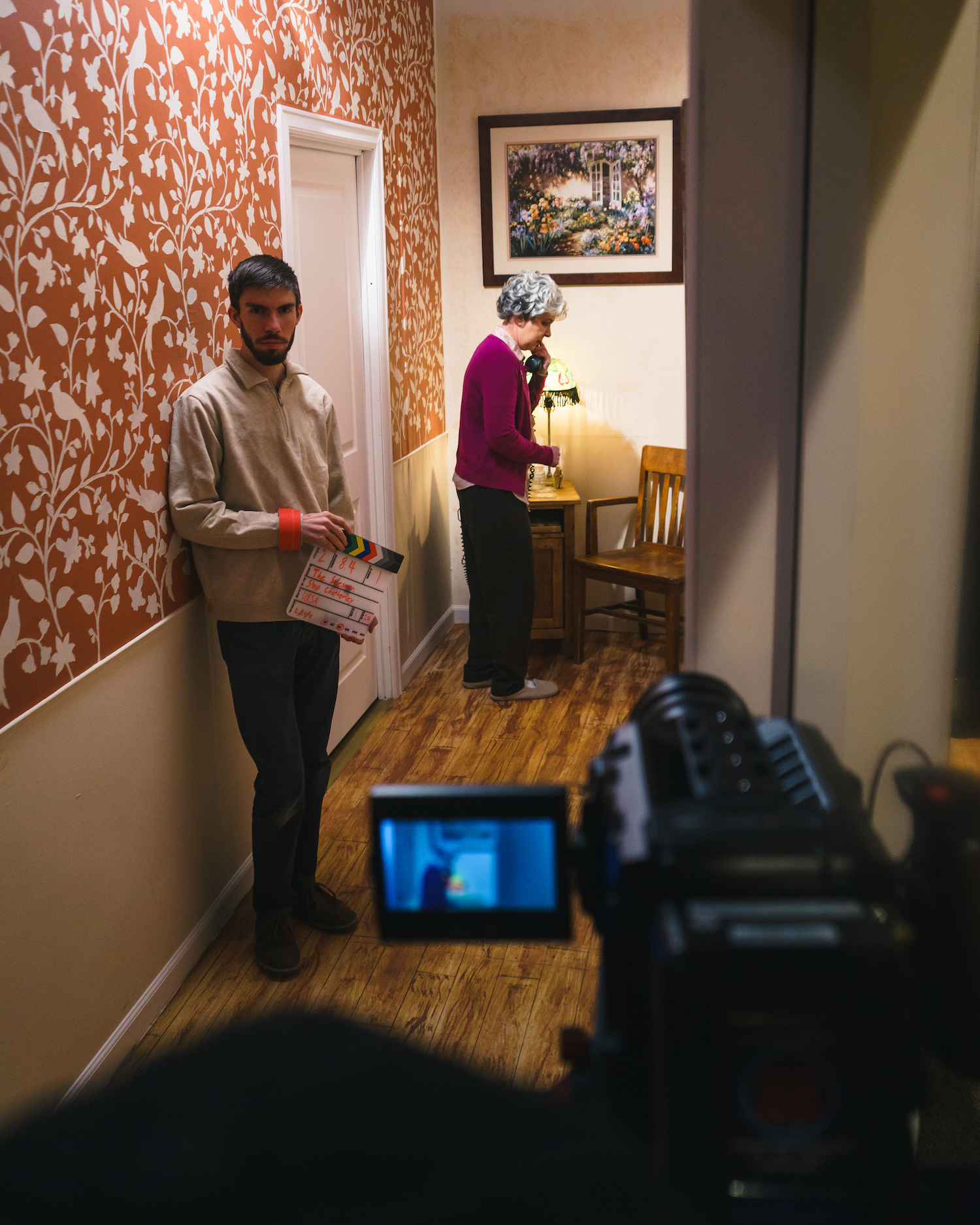
“Most classes cater more toward projects you do yourself, or have a larger responsibility for,” he said.
“We had a really good variety of interests in this class. Not everybody wanted to be a director.”
In keeping with the classes goal of being an authentic foray into filmmaking, there is a budget for the film and, of course, craft services on set.
Wilkerson is in charge of both. She doesn’t have a hard budget, she said, but is trying to keep the film under $8,000.
“I am trying to make sure the majority of things I spend money on have a life beyond this class,” she said. “We want to leave a legacy behind so the next class has that much more to play with.”
The job of organizing food during shooting is one that Wilkerson says she takes on because it’s important to the project, and also no one else wants to do it.
“It’s a job that is absolutely essential,” she said. “It elevates the atmosphere on any set where people know they are being cared for as a human being.”
Wilkerson is effusive when talking about the hard work she has seen students put into the making of these films since she and Paula Lee, Program Manager for the Department of Film and Media Arts, conceived the idea.
“We came up with the idea to do this class, because there were a lot of students who were not having the chance to specialize in an area they were interested in. It gives them a chance to drill down and really focus on one aspect of filmmaking that they really enjoy.” ≠
Photo Gallery


